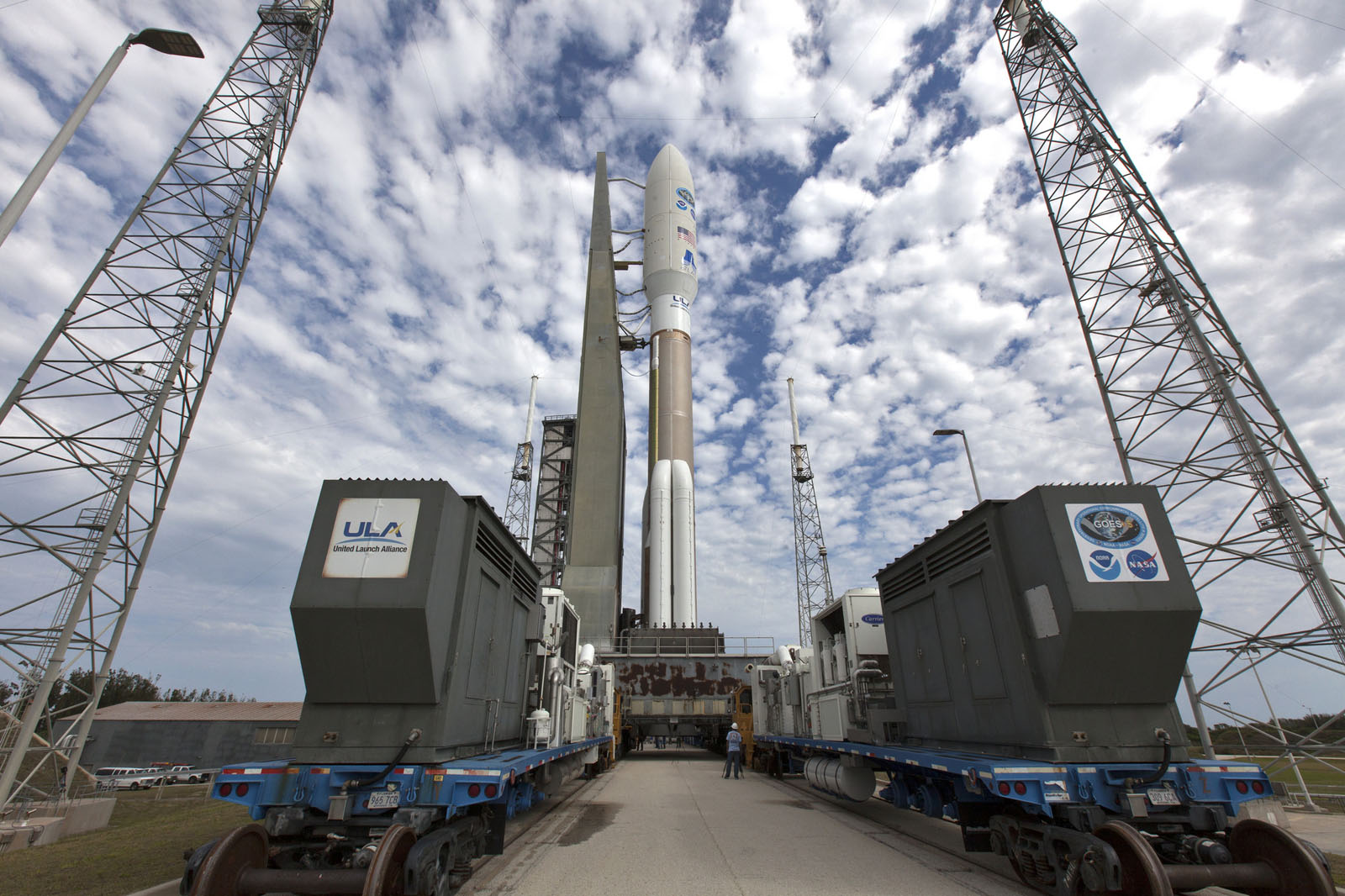Advanced GOES-S Weather Satellite Lifts Off Today: Watch the Launch Live
A new weather satellite, set to launch today (March 1), will help track wildfires, cyclones, fog and storms that threaten the western United States, as well as give researchers a view of that region in unprecedented detail.
The eagle-eyed satellite, launched as a partnership between the National Oceanic and Atmospheric Administration (NOAA) and NASA, will lift off on United Launch Alliance's Atlas V rocket from Cape Canaveral Air Force Station in Florida. The 2-hour launch window opens at 5:02 p.m. EST (2202 GMT), and you can watch the launch live here on Space.com, courtesy of NASA TV.
GOES-S (Geostationary Operational Environmental Satellite-S), which will be renamed GOES-West once it takes up its final orbit, will combine forces with GOES-East to provide a full picture of the weather over the United States. It will be the second high-tech satellite to launch in the GOES-R satellite series; the first launched in 2016. [Earth from Space: The Amazing Photos by the GOES-16 Satellite]
"GOES-S [is] the second in a new series of game-changing geostationary weather satellites," Tim Walsh, the acting system program director for the GOES-R satellite program at NOAA, said during a news conference Tuesday (Feb. 27). "Its coverage will include North America, Central America and all the way to New Zealand in the Pacific. [The satellite] will provide high-resolution imagery of Alaska and surrounding high-latitude areas previously unavailable or unusable from NOAA's geostationary constellation."
"When it launches on March 1 and becomes operational later this year, GOES-S will help us see the West in true high definition and, along with the remaining satellites in the series, will extend the life of NOAA's geostationary weather constellation to 2036," he added.
According to the 45th Weather Squadron at Cape Canaveral Air Force Station, there's an 80 percent chance of favorable weather. In case of a launch delay, there is a backup window at the same time tomorrow (March 2), which also has an 80-percent chance of favorable weather.
GOES-S' sister satellite, GOES-East (formerly known as GOES-16 and GOES-R), has already provided critical data during many extreme weather events over the past year, NASA and NOAA officials said at the news conference.
Breaking space news, the latest updates on rocket launches, skywatching events and more!
"GOES-16, even beyond the spectacular imagery we've had, is already proving to be a game changer, with much more refined, higher-quality data for faster, more accurate weather forecast warnings and alerts," Steve Volz, NOAA's director for satellite and information services, said during the news conference. "This means, quite frankly, more lives are saved, and better environmental information is made available for state and local officials, who, for example, may need to make decisions about when to call for evacuations when life-threatening storms or wildfires occur."
GOES-S is set to extend that range, giving NOAA powerful weather data across even more of the globe to track weather as it develops.
Email Sarah Lewin at slewin@space.com or follow her @SarahExplains. Follow us @Spacedotcom, Facebook and Google+. Original article on Space.com.

Sarah Lewin started writing for Space.com in June of 2015 as a Staff Writer and became Associate Editor in 2019 . Her work has been featured by Scientific American, IEEE Spectrum, Quanta Magazine, Wired, The Scientist, Science Friday and WGBH's Inside NOVA. Sarah has an MA from NYU's Science, Health and Environmental Reporting Program and an AB in mathematics from Brown University. When not writing, reading or thinking about space, Sarah enjoys musical theatre and mathematical papercraft. She is currently Assistant News Editor at Scientific American. You can follow her on Twitter @SarahExplains.


